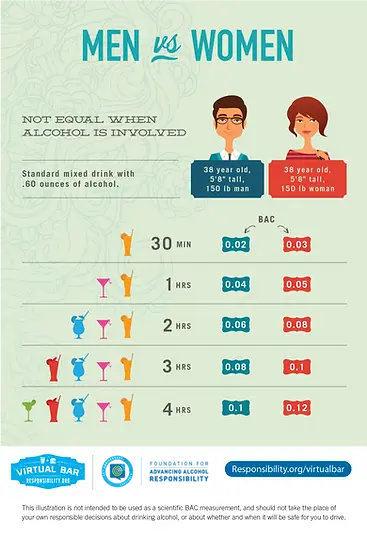
ALCOHOL
Alcohol is the most commonly used addictive substance in the U.S. According to a 2023 national survey, 224.3 million people ages 12 and older (79.1% in this age group) reported that they drank alcohol at some point in their lifetime. For youth ages 12 - 17, 4.4 million (nearly 17%) reported drinking in the past year.
Underage Drinking
Underage drinking poses significant risks to brain development. Did you know the brain doesn't stop developing until age 25? The areas responsible for decision-making, impulse control, and memory are the last to fully develop and drinking alcohol as a teen can interfere with these processes, leading to long-term cognitive issues and increased vulnerability to addiction.
The Law
Social Host Law
As a host, you can be held legally responsible for underage drinking events in your home, even if you are not present. Hosting underage drinking parties can result in criminal charges and civil liability if someone is injured or killed.
Tips for Hosts:
-
Do not provide alcohol to minors
-
Store liquor in a locked cabinet
-
Don’t mix alcohol with non-alcoholic beverages at parties
-
Check IDs to ensure guests are of legal drinking age
-
Monitor your home while away to prevent underage drinking

Penalties for Underage Drinking
Connecticut has strict penalties for underage drinking. Underage individuals caught with alcohol can face fines, community service, and mandatory alcohol education programs. Additionally, minors who drive under the influence face license suspension, fines, and even jail time.
Penalty Details:
-
First offense: Between $200 & $500 fine and possible community service.
-
Subsequent offenses: Increased fines, community service, and possible imprisonment.
-
License suspension for minors caught driving under the influence.
Driving While Intoxicated
Driving while intoxicated is a serious offense that endangers lives. In Connecticut, a DWI charge can result from a blood alcohol concentration (BAC) of 0.08% or higher for adults, and 0.02% or higher for drivers under 21.
Penalties for DWI:
-
First offense: Up to 6 months in jail, $500-$1,000 fine, and a 45-day license suspension.
-
Second offense: Up to 2 years in jail, $1,000-$4,000 fine, and a 45-day license suspension with mandatory ignition interlock device
-
Third offense: Up to 3 years in jail, $2,000-$8,000 fine, and a permanent license revocation.
Fake IDs
If you are under the age of 21 and use a fake identification or use the ID of another person to obtain alcohol, you may face the following penalties:
-
Simply using a fake license is a criminal offense called Forgery. Misdemeanor Forgery can result in up to six months in jail. In some circumstances, Forgery is a felony punishable by up to 5 years in jail.
-
Driver's License Suspension: Your driver's license may be suspended for up to 150 days. If you are not a licensed driver, you will have to wait 150 days before being eligible to apply for a driver's license.
Using fake IDs to purchase alcohol is illegal and can result in severe consequences, including fines, community service, and potential jail time. Establishments caught selling alcohol to minors using fake IDs can also face legal penalties and loss of their liquor license.
Legal Consequences:
-
Fines up to $500.
-
Up to 30 days in jail.
-
Community service requirements.
Responsible Drinking for Adults
Responsible drinking means understanding your limits, making safe choices, and respecting others. It includes drinking in moderation, not driving under the influence, and being mindful of the impact of your drinking on others.
Guidelines for Responsible Drinking:
-
Follow the National Institute on Alcohol Abuse and Alcoholism (NIAAA) guidelines: up to one drink per day for women and up to two drinks per day for men.
-
Avoid binge drinking, defined as consuming five or more drinks on a single occasion for men, and four or more for women.
-
Designate a sober driver or use alternative transportation if you plan to drink.
This is a blood alcohol content (BAC) calculator from Responsibility.org. It helps you understand how different factors affect your BAC depending on your gender, weight, the food you eat, and what and how you drink. Check it out.
You can also take this quiz to see if you are a responsible drinker.

Graphic from DrugFreeCT.org

Dangers of Mixing Alcohol with Medication
Mixing alcohol with medications can be dangerous and even life-threatening. Alcohol can interfere with the effectiveness of medications and exacerbate their side effects.
Common Risks:
-
Increased drowsiness and dizziness
-
Impaired motor skills
-
Risk of overdose due to suppressed breathing
Visit this website to Learn more and find out which over-the-counter and prescription medications have serious interactions with alcohol.
Be a Good Role Model
Modeling Responsible Behavior for Your Kids
Parents play a crucial role in shaping their children's attitudes towards alcohol. By modeling responsible drinking behaviors and having open conversations about alcohol, parents can help prevent underage drinking and promote healthy choices.

Tips for Parents:
-
Discuss the risks of underage drinking with your children.
-
Set clear rules and expectations about alcohol use.
-
Lead by example by drinking responsibly and never driving under the influence.
Alcohol-Free Lifestyle
Modeling Responsible Behavior for Your Kids
Embracing alcohol-free lifestyles is becoming more popular. Mocktails, Dry January, and other sober trends offer healthy alternatives and promote wellness without the risks associated with alcohol consumption.
Benefits:
-
Improved physical health.
-
Better sleep and mood.
-
Enhanced mental clarity and productivity.




Resources









